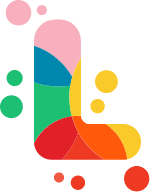Tonga Form One Tongan Language Study AI
Tonga Form 1 Curriculum - Tongan LanguageThis outlines the Tongan Language curriculum, incorporating elements observed from various sources. While a definitive Form 1 curriculum is not readily available online, this compilation synthesizes information about the Tongan language and educational resources to provide a comprehensive overview. I. Language Fundamentals Alphabet and Pronunciation: The Tongan alphabet consists of 16 letters (a, e, i, o, u, f, h, k, l, m, n, ng, p, s, t, v) and the fakau'a (`), a glottal stop. Correct pronunciation is crucial, including understanding vowel length (short, long, double), influence of the fakau'a, and definitive accents. Intonation can also vary regionally. Resources like Tongan for Beginners ( and Introduction to the Tongan Language* ( offer guidance. Numbers: Learning numbers (0-10 and beyond) is fundamental. The Guidelines for Tongan Language Programmes* ( provides examples.
II. Cultural Contexts Special Language: Tongan employs specific terms for counting different items (yams, tapa cloth, fish, coconuts, mats), family members, poetic expression, myths and legends (ngaahi paloveape and talatupu'a*), place names, and varying social levels of address. Cultural Practices: Understanding Tongan culture is interwoven with language learning. Topics like naming customs (`Amanakinoa-`a-Lose Kakala - cooking (faikakai), fishing (fangota), and traditional arts (ngatu - tapa cloth) provide rich learning opportunities.
III. Learning Resources and Activities
IV. Cross-Curricular Connections Tongan language learning can be integrated with other subjects, such as:
This framework, while not a verbatim reproduction of the official curriculum, offers a structured approach to learning Tongan language and culture, drawing upon available resources and suggested activities. It emphasizes the importance of communicative competence, cultural understanding, and engaging learning experiences. |

